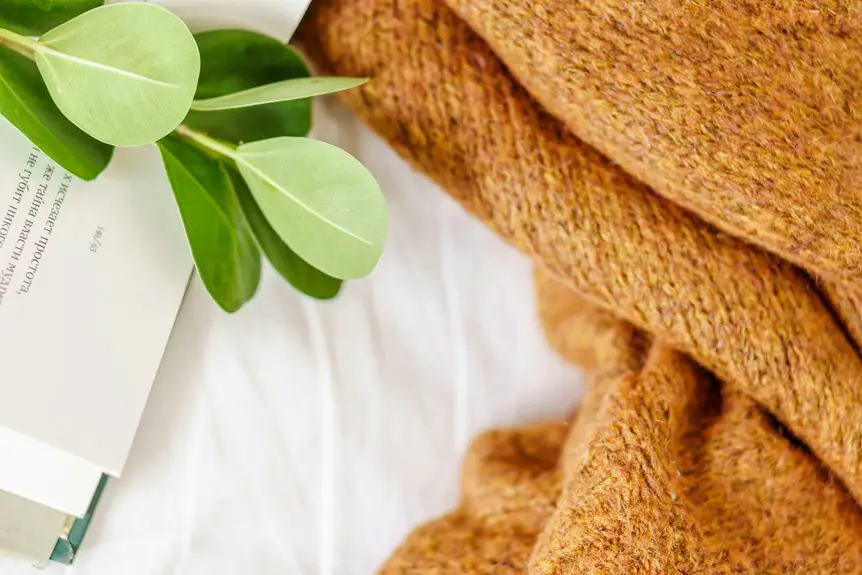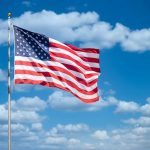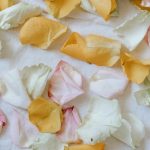You’ll be glad to know Kona fabric is primarily made in the USA, crafted with premium cotton grown in California and Texas. Its story started with American agricultural innovation aiming for soft, durable cotton. Robert Kaufman Fabrics established the Kona brand to offer quilters consistent colors and quality. Production benefits from skilled American craftsmanship alongside eco-friendly practices. If you want to understand how these factors shape Kona’s superior texture and sustainability, keep exploring the details behind this popular fabric.
Table of Contents
Key Takeaways
- Kona Cotton fabric is primarily produced in the USA, especially in California and Texas, leveraging ideal climate and soil conditions.
- The Kona brand was established by Robert Kaufman Fabrics to provide consistent, high-quality quilting cotton.
- American manufacturing uses advanced machinery and skilled craftsmanship to ensure Kona fabric’s durability and smooth texture.
- Sustainable cotton sourcing and eco-friendly dyeing methods are integral to Kona fabric’s production in the USA.
- The fabric’s origin traces to early 20th-century agricultural innovation focused on long-fiber cotton for softness and strength.
The History of Kona Cotton Fabric
Although Kona cotton fabric is well-known today for its vibrant colors and smooth texture, its history dates back to a time when farmers sought a reliable, high-quality cotton to cultivate.
Kona cotton’s vibrant hues and softness stem from farmers’ early quest for exceptional quality.
You’ll find that its roots trace to the early 20th century when agricultural innovation aimed to improve cotton’s durability and feel. Farmers focused on growing cotton with longer fibers, which resulted in a softer, stronger fabric.
This pursuit led to the development of a cotton variety that combined quality with versatility, ideal for various textile uses.
When you handle Kona cotton, you’re experiencing a fabric shaped by decades of agricultural refinement and dedication to quality, a tribute to the efforts of those early cultivators who wanted more than just standard cotton.
The Origins of the Kona Brand
While many recognize Kona for its vibrant cotton, fewer know how the brand itself came to be a symbol of quality and creativity in quilting and crafting.
You’ll find that Kona was established by Robert Kaufman Fabrics, a company with deep roots in the textile industry. They launched Kona to meet the growing demand for premium quilting cotton that offered consistency in color and texture.
By focusing on a broad palette of solid colors, the brand quickly gained popularity among quilters and designers who valued reliability and vibrant hues.
When you choose Kona, you’re tapping into a legacy of thoughtful fabric development aimed at inspiring your creativity and ensuring your projects turn out beautifully every time.
This brand’s origins reflect a commitment to supporting crafters like you.
Where Is Kona Cotton Manufactured?
You might be curious about where Kona cotton is actually made and how it reaches your hands.
Most of the production happens in the United States, where the cotton is carefully grown, harvested, and processed.
Understanding the manufacturing process helps you appreciate the quality behind every yard of Kona fabric.
Kona Cotton Production Locations
Since Kona cotton is prized for its exceptional quality, you might wonder where it’s actually produced.
While the term “Kona” often refers to the region in Hawaii famous for coffee, Kona cotton fabric isn’t grown there. Instead, most Kona cotton comes from the United States, primarily grown in California and Texas.
These states offer the ideal climate and soil conditions for cultivating high-quality cotton. You’ll also find some production in countries like Egypt and India, known for their premium cotton varieties.
However, the Kona cotton you purchase in the U.S. is typically sourced domestically to maintain quality control and consistency.
Understanding where Kona cotton is produced helps you appreciate the care and environment behind this sought-after fabric.
Manufacturing Process Overview
Kona cotton is primarily manufactured in specialized mills across the United States, with California and Texas leading the way. When you follow the process, raw cotton fibers first undergo cleaning and carding to align them. Then, spinning machines twist these fibers into strong yarn. Afterward, the yarn is woven or knitted into fabric, often followed by dyeing to achieve vibrant colors. Quality control is essential at each step to guarantee softness and durability.
| Step | Description |
|---|---|
| Cleaning & Carding | Removes impurities and aligns fibers |
| Spinning | Twists fibers into yarn |
| Weaving/Dyeing | Creates fabric and adds color |
This process guarantees the Kona fabric you use is both high-quality and authentically American-made.
The Role of Robert Kaufman Fabrics
Although you mightn’t realize it, Robert Kaufman Fabrics has played a pivotal role in shaping the widespread appeal of Kona fabric.
They didn’t just distribute fabric—they championed quality, consistency, and vibrant color options that quilters and designers adore.
When you pick up Kona fabric, you’re experiencing their dedication to excellence and innovation. Their influence helped Kona become a household name in the fabric world.
Here’s what makes Robert Kaufman Fabrics stand out:
- Commitment to premium cotton quality
- Wide, rich color palette that inspires creativity
- Support for the quilting community
- Consistent fabric texture and durability
- Pioneering collaborations with designers
You can feel their passion woven into every yard of Kona fabric you use.
Production Facilities and Locations
Robert Kaufman Fabrics’ dedication to quality extends beyond design and color—it’s also reflected in where and how they produce Kona fabric. When you choose Kona, you’re supporting manufacturing primarily based in the United States.
The production facilities are strategically located to guarantee tight control over the fabric’s consistency and craftsmanship. These sites combine advanced technology with skilled workers who oversee every step, from yarn preparation to final finishing.
While some components might come from global sources, the majority of the weaving and dyeing happens domestically. This local focus helps Robert Kaufman maintain prompt delivery schedules and respond quickly to quality demands.
Quality Standards of Kona Cotton
When you choose this cotton, you’re trusting a fabric that meets rigorous quality standards at every stage. Kona cotton undergoes meticulous inspection to guarantee durability, vibrant colors, and consistent texture.
You can feel confident knowing that every bolt is tested for thread count and strength, ensuring a smooth yet sturdy finish. The attention to detail means the fabric holds up beautifully over time, resisting wear and tear.
Kona cotton’s quality isn’t just a promise—it’s proven through:
- Strict fiber selection for softness and resilience
- Consistent dyeing processes for rich, fade-resistant hues
- High thread counts guaranteeing a luxurious feel
- Rigorous testing to prevent flaws and irregularities
- Ethical manufacturing practices supporting sustainability and trust
You’re not just buying fabric—you’re investing in excellence.
Why Quilters Prefer Kona Fabric
You’ll appreciate Kona fabric for its vibrant color range that brings your quilts to life.
Its high-quality cotton guarantees durability and comfort in every stitch.
Plus, the consistent fabric texture makes your sewing process smooth and predictable.
Vibrant Color Range
A key reason quilters favor Kona fabric is its impressive palette of vibrant colors. When you choose Kona, you’re getting shades that inspire creativity and bring your projects to life.
The rich, true-to-tone hues let you mix and match effortlessly, making every quilt uniquely yours. Whether you want bold contrasts or subtle blends, Kona’s color range gives you the freedom to express your artistic vision fully.
- Bright reds that ignite passion
- Soothing blues that calm and refresh
- Warm yellows that brighten any space
- Deep greens that connect you to nature
- Soft pastels that add gentle charm
With Kona, your quilts don’t just hold fabric—they hold emotion and personality.
High-Quality Cotton
Because Kona fabric uses premium cotton, quilters trust it for durability and softness. You’ll notice the fabric holds up well wash after wash, making your projects last longer. Its fine cotton fibers create a smooth surface that feels comfortable to work with and wear. This quality cotton also absorbs dyes evenly, giving you vibrant colors that pop in your quilts. When you choose Kona, you’re selecting a fabric that balances strength and gentle texture, perfect for intricate stitching.
| Feature | Benefit | Why It Matters |
|---|---|---|
| Premium Cotton | Soft yet durable fabric | Long-lasting quilts |
| Fine Fibers | Smooth texture | Comfortable handling |
| Even Dye Absorption | Bright, consistent color | Vibrant finished look |
Consistent Fabric Texture
When you work with Kona fabric, you’ll quickly notice its consistently smooth texture across every yard. This uniformity means you don’t have to worry about uneven patches or rough spots ruining your project.
The fabric feels soft yet sturdy, giving your quilt a polished, professional look. Because the texture stays the same, your stitching flows effortlessly, making your crafting experience more enjoyable and less frustrating.
You’ll love how Kona fabric:
- Feels reliably smooth to the touch
- Supports precise, neat stitching
- Enhances the overall quilt appearance
- Reduces fabric handling issues
- Creates consistent color vibrancy
This dependable texture is a big reason quilters keep coming back to Kona fabric for their most treasured projects.
The Impact of American Manufacturing on Kona
Though Kona initially gained fame for its unique textures and vibrant colors, its growth truly accelerated as American manufacturing techniques reshaped production.
When you choose Kona fabric made in the USA, you benefit from advanced machinery and skilled craftsmanship that guarantee consistent quality. American mills focus on precision, which enhances Kona’s smoothness and durability.
You’ll notice how these manufacturing improvements allow for more vibrant dye absorption, making your projects stand out. Plus, local production means quicker turnaround times and better oversight, so you get reliable fabric every time.
Sustainability Practices in Kona Fabric Production
You’ll find that Kona fabric production embraces eco-friendly dyeing methods to reduce environmental impact.
They also focus on sourcing sustainable cotton to keep the process green from start to finish.
Plus, waste reduction initiatives help minimize leftover materials and energy use throughout manufacturing.
Eco-friendly Dyeing Methods
Because the dyeing process traditionally uses harsh chemicals, Kona fabric producers have adopted eco-friendly methods to reduce environmental impact.
When you choose Kona fabric, you support processes that prioritize the planet. These producers use natural dyes and water-saving techniques to keep ecosystems safe.
You’ll appreciate how they minimize chemical runoff and energy consumption, protecting wildlife and communities alike. Their commitment means you can enjoy vibrant colors without guilt.
- Feel proud knowing your fabric choice helps conserve water resources
- Trust that fewer toxins enter rivers and soil
- Support artisans who care about healthy work conditions
- Enjoy softer fabric free from harsh chemical residues
- Join a movement toward more responsible, earth-friendly textiles
Sustainable Cotton Sourcing
Building on eco-friendly dyeing methods, Kona fabric producers also focus on where their cotton comes from.
You’ll appreciate that they prioritize sourcing cotton grown with sustainable farming practices. This means less water usage, reduced pesticide reliance, and support for soil health.
By choosing cotton from farms committed to environmental stewardship, they help protect ecosystems and promote biodiversity. You can trust that this sustainable sourcing reduces the carbon footprint associated with raw materials in Kona fabric production.
Plus, many suppliers engage in fair labor practices, ensuring ethical treatment of workers throughout the supply chain.
When you pick Kona fabric, you’re supporting not only quality but also a more responsible approach to cotton cultivation that aligns with your values for sustainability and social responsibility.
Waste Reduction Initiatives
While Kona fabric producers prioritize sustainable cotton sourcing, they also take significant steps to reduce waste throughout their manufacturing process.
You’ll appreciate how they carefully manage fabric scraps and optimize production methods to minimize leftover material. Their commitment means less environmental impact and more efficient use of resources. When you choose Kona fabric, you support these waste reduction efforts, helping protect the planet.
Here are some inspiring ways they reduce waste:
- Recycling fabric scraps into new materials
- Using digital cutting technology to avoid excess cuts
- Donating leftover fabric to community projects
- Implementing water-saving dyeing techniques
- Training workers to maximize fabric use and minimize errors
Comparing Kona Fabric to Other Cotton Fabrics
When you compare Kona fabric to other cotton fabrics, its smooth texture and tight weave stand out immediately.
You’ll notice Kona’s consistent quality, which makes it ideal for quilting and apparel where precision matters. Unlike standard cotton, Kona offers a denser weave, giving it a durable yet soft feel that resists pilling and stretching.
If you’re used to cotton broadcloth or muslin, Kona feels more refined and substantial. While both Kona and typical cotton fabrics are breathable and easy to care for, Kona’s higher thread count enhances color vibrancy and print clarity, making your projects pop.
Future Trends for Kona Cotton in the USA
Kona fabric’s superior qualities make it a favorite among quilters and designers, but its story doesn’t end there.
As demand for sustainable, high-quality textiles grows, Kona cotton is poised for exciting developments in the USA. You’ll see increased innovation in organic farming methods and eco-friendly dyeing processes.
Plus, local artisans and small businesses are expanding their use of Kona to create unique, American-made products. You can expect collaborations that blend tradition with modern design, further boosting Kona’s appeal.
Look forward to these future trends for Kona cotton in the USA:
- Emphasis on sustainable and organic production
- Rise of locally crafted, small-batch products
- Integration of advanced eco-friendly dyes
- Collaborations between designers and farmers
- Growth in consumer awareness about fabric origins
Frequently Asked Questions
What Types of Projects Are Best Suited for Kona Fabric?
You’ll love Kona fabric for quilting since 97% of quilters prefer its smooth texture. It’s perfect for clothing, home décor, and crafts because it’s durable, vibrant, and easy to sew, making your projects shine effortlessly.
How Do You Care for and Wash Kona Cotton Fabric?
You should wash Kona cotton fabric in cold water with mild detergent to keep colors vibrant. Avoid bleach, tumble dry low or air dry, and iron on medium heat for best results.
Is Kona Fabric Suitable for Beginners in Quilting?
When it comes to quilting, Kona fabric is your bread and butter. You’ll find it easy to work with, thanks to its smooth texture and consistent quality, making it perfect for beginners keen to hone their skills.
What Color Options Are Available in Kona Fabric Lines?
You’ll find Kona fabric comes in over 300 vibrant colors, from soft pastels to bold brights. This wide palette lets you mix and match easily, giving your quilting projects endless creative options.
Can Kona Fabric Be Used for Clothing as Well as Quilting?
Did you know Kona Cotton is 100% cotton? You can totally use it for clothing and quilting since it’s durable and soft. Just remember, it’s a bit heavier than typical apparel fabrics, so plan accordingly!
- Does Chiffon Fabric Stink - July 15, 2025
- Does Chiffon Fabric Affect the Economy - July 15, 2025
- Does Cotton Fabric Have a Nap - July 15, 2025







